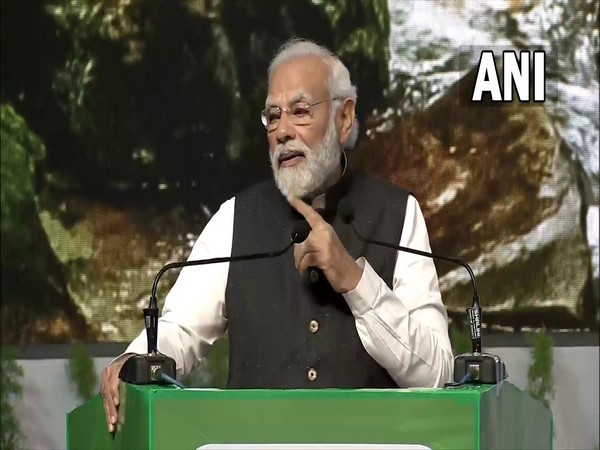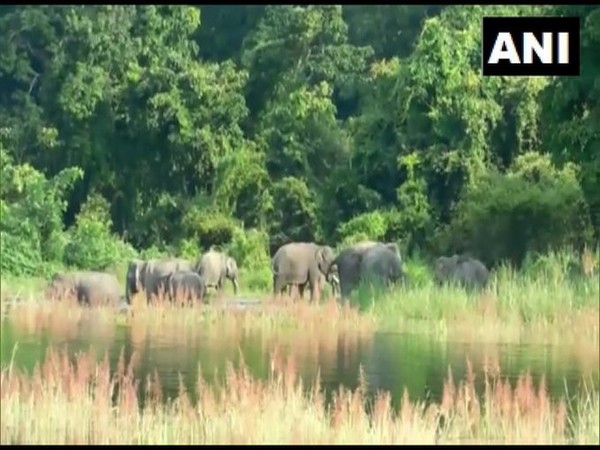Highlighting the growing tiger population in the country, Prime Minister Narendra Modi on Sunday said India’s tradition and culture, as well as the biodiversity in the country, were among the major reasons for this achievement.
PM Modi inaugurated the ‘Commemoration of 50 years of Project Tiger’ on Sunday.
Addressing the inaugural session of commemoration of ’50 Years of Project Tiger’ in Mysuru, PM Modi emphasised that protection of wildlife is a universal issue.
“Project Tiger leads the way in the protection and conservation of the big cats. International Big Cat Alliance is our endeavour for the protection and conservation of big cats,” he said.
The success of Project Tiger, PM Modi said is a matter of pride not only for India but also for the world. India has not only conserved tigers but has also given them an ecosystem to flourish.
While celebrating 75 years of Independence, India added 11 wetlands to its list of Ramsar sites. This took the total number of Ramsar sites to 75, he said.
For wildlife to thrive, Prime Minister said it is important for ecosystems to thrive and the same has been happening in the country.
PM Modi said, “A better future for humanity is possible only when our environment remains safe and our biodiversity continues to expand. This responsibility belongs to all of us, it belongs to the whole world. We are continuously encouraging this spirit during our G20 presidency.”
He said India is a country where protecting nature is part of the culture.
Prime Minister Modi said, “When their population is stable or decreasing in many tiger reserve countries, then why is it increasing rapidly in India? This is because of the tradition and culture of India and the biodiversity in the Indian society, as well as our natural urge for the environment.”
“With only 2.4 per cent of the world’s land area, India contributes about 8 per cent of known global biodiversity. India is home to the largest tiger range country in the world. We do not believe in the conflict between ecology and economy, but give importance to co-existence between the two,” he said.
In the last decade, PM Modi said the number of community reserves increased from 43 to over 100. The number of national parks and sanctuaries, around which eco-sensitive zones were notified, increased from 9 to 468 in a decade, he said.
The success of Project Tiger is a matter of pride not only for India but for the whole world, he said assign that India consists of around 75 per cent of the world’s tiger population.
Prime Minister Modi said India is the only country in the world to have Asiatic lions. The lion population in India has increased from 525 in 2015 to 675 in 2020. The leopard population went up by over 60 per cent in just four years.
Referring to ‘Project Cheetah’, PM Modi said, “Cheetahs had become extinct in India decades ago. We brought this magnificent big cat to India from Namibia and South Africa. This is the first successful trans-continental translocation of the big cat. A few days ago, four beautiful cubs were born in Kuno National Park,” he said.
He stressed that the presence of Big Cats has made a positive impact on the lives and ecology of the local people everywhere. Due to Big Cats, PM said the number of tourists to Tiger Reserves has increased and this has strengthened the local economy.
He further said, “The lifestyle of the tribal society also helps a lot in understanding the vision of ‘Mission Life’ ie Lifestyle for Environment. That is why I request all of you to definitely take something from the life and tradition of tribal society for your country and society.”
“The Elephant Whispers documentary that won an Oscar also reflects our legacy of the wonderful relationship between nature and creatures. I urge you (foreign dignitaries) to take something from the life and tradition of our tribal society,” added PM Modi.
With the aim to curb poaching and illegal wildlife trade, Prime Minister on Sunday launched the International Big Cats Alliance (IBCA) in Karnataka.
During the programme, he released the publication ‘Amrit Kaal Ka Vision for Tiger Conservation’, a summary report of 5th cycle of Management Effective Evaluation of Tiger Reserves.
He also released a summary report of All India Tiger Estimation (5th cycle).
PM Modi also released a commemorative coin on the completion of 50 years of Project Tiger.
He interacted with field directors of tiger reserves that have scored highest in the recently concluded 5th cycle of the Management Effectiveness Evaluation exercise.
According to Prime Minister’s Office (PMO), the IBCA will focus on the protection and conservation of seven major big cats of the world — Tiger, Lion, Leopard, Snow Leopard, Puma, Jaguar and Cheetah.
In July 2019, Prime Minister Modi called for an Alliance of Global Leaders to firmly curb poaching and illegal wildlife trade in Asia. (ANI)
Read More: http://13.232.95.176/

